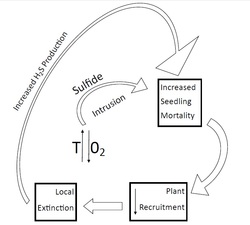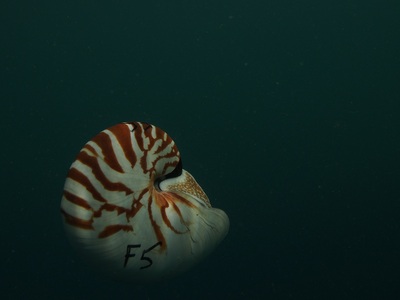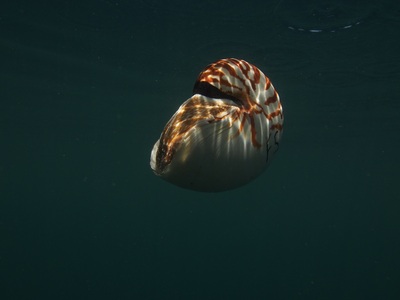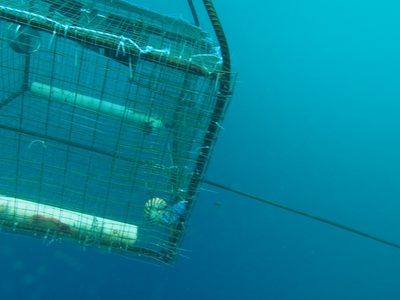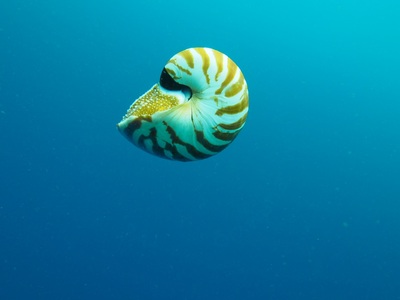Green lake, New York, USA
Understanding how plants evolved in a world full of H2S is very important in understanding how modern plants will respond to changing conditions and possible exposure to H2S. Green lake, (http://en.wikipedia.org/wiki/Green_Lake_%28New_York%29) is a chemically stratified lake into an oxygenated upper portion (mixolimnion) and a euxinic deeper portion (monimolimnion).Because of this different bacterial and algal communities live under drastically different conditions (meromictic character) that mimic deep time and are believed to represent a possible analog to ancient ocean environments during the Precambrian and during times of environmental stress. We recently discovered that Charophytes live in the transition zone and can tolerate high levels (mM) of hydrogen sulfide (Gupta et al). Understanding this is key to understanding plant evolution during times of euxinic environments.
Understanding how plants evolved in a world full of H2S is very important in understanding how modern plants will respond to changing conditions and possible exposure to H2S. Green lake, (http://en.wikipedia.org/wiki/Green_Lake_%28New_York%29) is a chemically stratified lake into an oxygenated upper portion (mixolimnion) and a euxinic deeper portion (monimolimnion).Because of this different bacterial and algal communities live under drastically different conditions (meromictic character) that mimic deep time and are believed to represent a possible analog to ancient ocean environments during the Precambrian and during times of environmental stress. We recently discovered that Charophytes live in the transition zone and can tolerate high levels (mM) of hydrogen sulfide (Gupta et al). Understanding this is key to understanding plant evolution during times of euxinic environments.
|
South Pacific Nautilus research -
Upon joining the Ward lab I have been a part of several paleontological and ecological projects. One such is evaluating the cephalopod nautilus habitat, distribution and population across the Indo-Pacific. I have been part of several research expeditions where I assisted in evaluating the physiology of nautilus and population stresses. In doing so I have traveled to Fiji, American Samoa, Australia, Vanuatu, and the Philippines. Partnering with Dr. Greg Barord and save the nautilus (http://savethenautilus.com/) we established a comprehensive report that populations are declining (4). My colleagues Lauren Vandepas and Dr. Billie Swalla and I evaluated the genetics between the different geographic populations. We constructed a phylogeny using COI and 16S from Nautilus across the Indo-Pacific. Using this phylogeny we discovered that, contrary to the current paradigm, samples from the Philippines have the highest genetic diversity and several named Nautilus species may comprise one widespread species (5). Based on these results we recommended to CITIES that Nautilus should not be fished. Even though Nautilus research is a step from my main thesis project involving seagrass and sulfide accumulation, this project is dear to my heart and I will continue to engage in research and Nautilus conservation. |
St Thomas, Virgin Islands, USA
Tropical seagrasses experience different limiting factors and environmental stresses then those in the temperate regions. However, with increases in global temperature and bio-accumulation, inshore environments may experience increases in sulfide levels and euxinic conditions. Recently (winter 2014), I established a partnership with University of Virgin Islands, monitoring seagrass sites, and conducting physiological experiments similar to those that I conducted at the University of Washington.
Tropical seagrasses experience different limiting factors and environmental stresses then those in the temperate regions. However, with increases in global temperature and bio-accumulation, inshore environments may experience increases in sulfide levels and euxinic conditions. Recently (winter 2014), I established a partnership with University of Virgin Islands, monitoring seagrass sites, and conducting physiological experiments similar to those that I conducted at the University of Washington.
